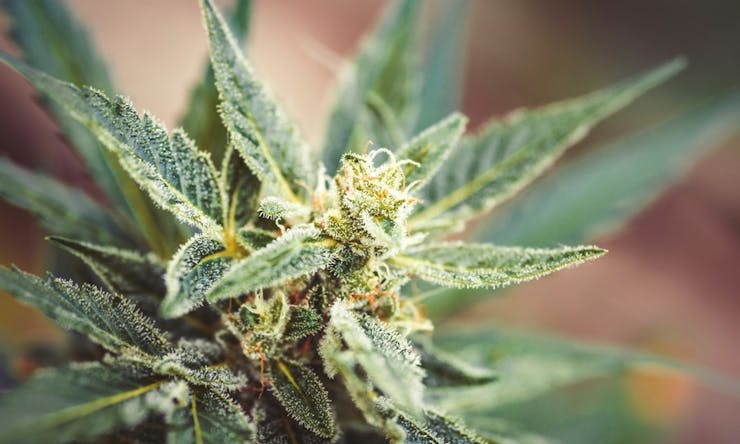The word “marijuana” plays a controversial role in cannabis culture. Many well-known organizations such as Oakland’s Harborside Heath Center have publicly denounced “the M word” in favor of our favorite plant’s Latinate name, cannabis. Even Salon Magazine, a major press outlet outside of the cannabis industry, published an article titled “Is the word ‘Marijuana’ racist?” last year.
As mainstream culture becomes a little more herb-friendly, the terminology used by the industry is coming to center stage. But, why exactly does the term “marijuana” cause so much debate? Even worse, why has the word gained publicity as a racist term?
To save you from reading those lengthy history books or some boring academic articles, we’ve created this brief timeline to give you the low-down on “marijuana”’s rise to popularity in the United States. Here’s what you need to know:
The Mexican Revolution
1840-1900:
Prior to 1910, “marijuana” didn’t exist as a word in American culture. Rather, “cannabis” was used, most often in reference to medicines and remedies for common household ailments. In the early 1900s, what have now become pharmaceutical giants—Bristol-Meyer’s Squib and Eli Lilly—used to include cannabis and cannabis extracts in their medicines.
During this time, Americans (particularly elite Americans) were going through a hashish trend. Glamorized by literary celebrities such as Alexander Dumas, experimenting with cannabis products became a fad among those wealthy enough to afford imported goods.
1910:
Between the years of 1910 and 1920, over 890,000 Mexicans legally immigrated into the United States seeking refuge from the wreckage of civil war. Though cannabis had been a part of U.S. history since the country’s beginnings, the idea of smoking the plant recreationally was not as common as other forms of consumption. The idea of smoking cannabis entered mainstream American consciousness after the arrival of immigrants who brought the smoking habit with them.
1913:
The first bill criminalizing the cultivation of “locoweed” was passed in California. The bill was a major push from the Board of Pharmacy as a way to regulate opiates and psychoactive pharmaceuticals, and seemingly did not stem from the “reefer madness” or racialized understanding of “marijuana” that paved the way to full-on prohibition in the 1930s.
The Aftermath
1930s:
The Great Depression had just hit the United States, and Americans were searching for someone to blame. Due to the influx of immigrants (particularly in the South) and the rise of suggestive jazz music, many white Americans began to treat cannabis (and, arguably, the black people and Mexican immigrants who consumed it) as a foreign substance used to corrupt the minds and bodies of low-class individuals.
In the time just before the federal criminalization of the plant, 29 states independently banned the herb that came to be known as “marijuana.”
Harry Anslinger:
It would not be an overstatement to say that Harry Anslinger was one of the primary individuals responsible for creating the stigma surrounding cannabis. Hired as the first director of the recently created Federal Bureau of Narcotics in 1930, Anslinger launched a vigilant campaign against cannabis that would hold steady for the three decades he remained in office.
A very outspoken man, Anslinger used the recent development of the movie theater to spread messages that racialized the plant for white audiences. In one documented incident, Anslinger testified before Congress, explaining:
“Marijuana is the most violence-causing drug in the history of mankind… Most marijuana smokers are Negroes, Hispanics, Filipinos and entertainers. Their satanic music, jazz and swing, result from marijuana usage.”
In another statement, Anslinger articulated: “Reefer makes darkies think they’re as good as white men…the primary reason to outlaw marijuana is its effect on the degenerate races.”
In retrospect, Anslinger’s efforts with the Bureau of Narcotics were the reason “marijuana” became a word known by Americans all over the country. When making public appearances and crafting propaganda films such as Reefer Madness, Anslinger specifically used the term “marijuana” when campaigning against the plant, adding to the development of the herb’s new “foreign” identity.
Cannabis was no longer the plant substance found in medicines and consumed unanimously by American’s all over the country.
1937:
The Marihuana Tax Act of 1937 was the culmination of Anslinger’s work and the first step to all-out prohibition. The bill federally criminalized the cannabis plant in every U.S. state. In order to discourage the production of cannabis use, the Tax Act of 1937 placed a one dollar tax on anyone who sold or cultivated the cannabis plant.
On top of the tax itself, the bill mandated that all individuals comply with certain enforcement provisions. Violation of the provisions would result in imprisonment and/or a fine of up to $2,000.
Though the word “marijuana” is the most common name for cannabis in the United States today, its history is deeply steeped in race, politics, and a complicated cultural revolution. Some argue that using the word ignores a history of oppression against Mexican immigrants and African Americans, while others insist that the term has now lost its prejudiced bite. Regardless of whether or not you decide to use the word yourself, it’s impossible to deny the magnitude and racial implications of its introduction to the American lexicon.





